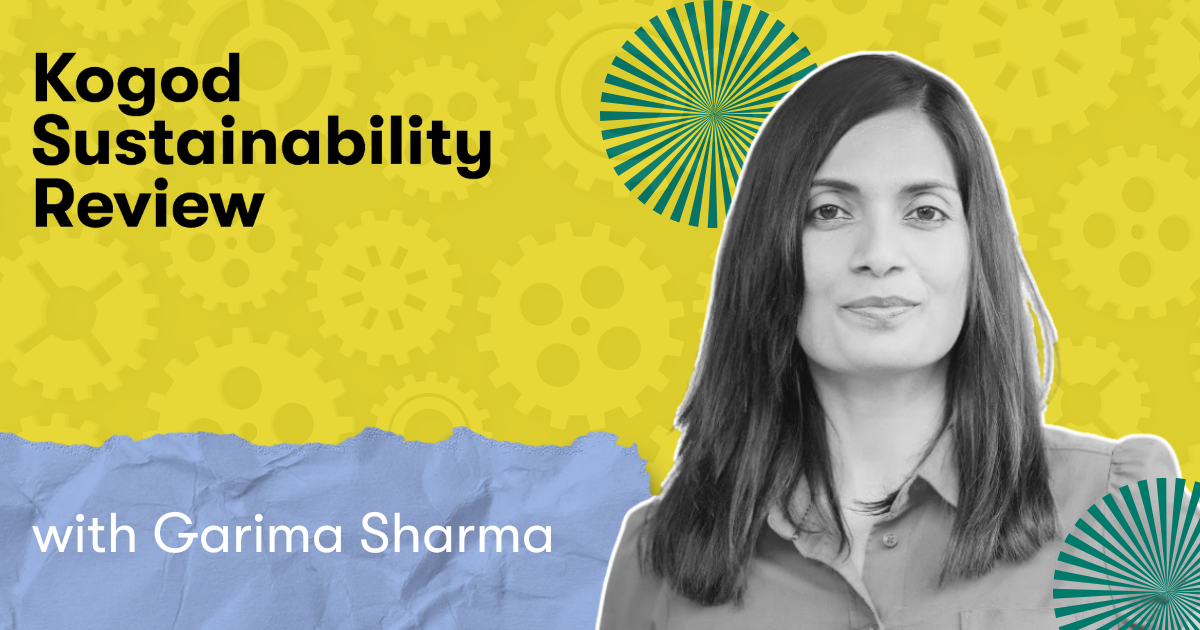
Garima Sharma
Professor of Management, Kogod School of Business
Circular Economy (CE) is a system. A system comprises a variety of elements that are connected to each other for an explicit purpose. CE “replace[s] the “end-of-life” concept with reducing, alternately reusing, recycling and recovering materials in production/distribution and consumption processes,” such that the waste of one process becomes inputs to the other. An example would be Patagonia’s Worn Wear Program. Through this program, Patagonia invites customers to trade in Patagonia clothing and gear for credit and apply the credit to buy used clothing and outdoor gear. Additionally, Patagonia holds events to fix broken gear, offer repair tips, and hold workshops to upcycle existing clothes. Further, they collect and recycle Patagonia products that have reached the end of life.
Patagonia’s example may imply that CE is a silver bullet for sustainability. However, orchestrating a CE, such as Patagonia’s program is far from simple. Others have noted that the circle metaphor in CE indicates a “promise of perfection, wholeness and eternity, but the simplicity of its grounding metaphor is misleading.”
Orchestrating a CE is a complex endeavor because it involves a variety of actors, e.g., Patagonia’s Worn Wear program would involve customers, recycling facilities, upcycling experts, value chain actors that can facilitate customer trade-in and so forth. A variety of actors bring with them their interests, and the question of where the responsibility and cost lie for different elements of a CE. Further, CE is complex because it involves a variety of ways in which resources and waste could flow, feedback loops that affect such flow, and blockages in the way of resource flow.
One way to address this complexity is through systems thinking. We are taught to think analytically and linearly by reducing wholes to parts and predicting the relationship between parts. Systems thinking challenges this approach and instead asks for looking at the whole and the parts. It asks us to accept uncertainty, be comfortable with complexity, and engage in new ways of thinking and collaborating.
Systems thinking is based on a few key principles.
Elements in a system, which could be people, non-humans, institutions, technology etc. are interconnected."

Garima Sharma
Professor of Management, Kogod School of Business
For example, in the case of CE, elements can be businesses that curate close-loop business models, regulators for policies that reduce cost of CE activities, technology for processing waste for reuse, educators and marketers for creating awareness, and so forth that are connected to each other.
Because elements in a system are interconnected, resources such as time, money, and products flow across the elements. In the case of CE, waste of one element say a post-consumer use soda can, becomes inputs for another, e.g., a recycling facility.
Interconnection also means that changes in one part of the system can affect the other parts, but usually there is a lag, making simple cause-effect calculations hard. For example, a business participating in a CE may produce a certain kind of packaging that cannot be recycled with the existing technologies. The waste collectors feeding into recycling facilities may exclude this packaging during sorting. As a result, the lag in recycling may not be immediately evident such that change required in business’ packaging may not happen for a long time.
Lastly, interconnections in a system are in terms of feedback loops that can attenuate or amplify effects in a system. As a result, outcomes are emergent. Outcomes cannot be fully predicted, and uncertainty is imminent in a system. For example, a regulation related to tax breaks on solar panels can actuate a positive feedback loop to encourage more installation of solar panels on homes. A lack of technology to repair solar panels can, in the same system, attenuate the number of solar panels installed. These loops can co-exist in a system such that the effect on the system of renewable energy is not a simple cost-effect calculation.
Despite the complexities in a system, there is significant potential in embracing systems thinking for moving the needle on sustainability issues including those related to CE."

Garima Sharma
Professor of Management, Kogod School of Business
An illustration of this potential is the Lab at Innovation North. It is a research-practice collaborative housed in Ivey Business School, Western University, Canada. The Lab ran from 2019-2024, and it brought together business leaders from across Canada with researchers studying systems and sustainability. In the Lab, alongside other researchers, we co-created the Innovation Compass, a tool for systems thinking for corporate innovation. The Compass takes system actors through four spaces: problem, awareness, ideas and action. The “problem” space helps redefine a business problem to a systems problem in which business is one, albeit critical, part of the system. The “awareness” space helps map the system including interconnections between elements, flows, feedback loops, obstacles to flows, and leverage points for change. The “ideas” space helps generate ideas that can unblock the flows and leverage the opportunities for change. The “action” space takes the “ideas” toward implementation by generating an ecology of actions that are connected to each other, mimicking the complexity of the system.
The research underlying the Compass, and the worksheets related to the Compass are freely available for any decision-maker wanting to make headway on systems and CE. An example of such an application is at American University (AU). Along with an interdisciplinary team of AU researchers, AU’s sustainability office, and AU’s office of procurement, we are using the Innovation Compass to understand how the office of procurement can make strides toward a sustainable procurement system.
In addition, the Lab serves as an illustration of what is possible when researchers and business leaders come together to address a complex problem such as that related to CE. The learnings from the Lab point to novel ways of working together that are needed to address systems change like the one that CE demands. The good news is that there is a strong momentum toward systems thinking, and tools and frameworks that can sustain this momentum.
The learnings from the Lab have informed a course on Sustainability Systems and Innovation (MGMT 417/617) at Kogod School of Business. This 8-week online course is an elective in Kogod’s award winning Master of Science in Sustainability Management (MSSM) program. The students learn about key concepts of systems such as interconnections and feedback loops, build skills such as those related to systems mapping and learn about the Innovation Compass. The course culminates with the project in which student team apply the Compass to an innovation problem facing a business. The course runs every spring semester, and the online modality allows businesses from anywhere in the country to participate in the project. If your organization would like to participate, please contact Garima Sharma.
